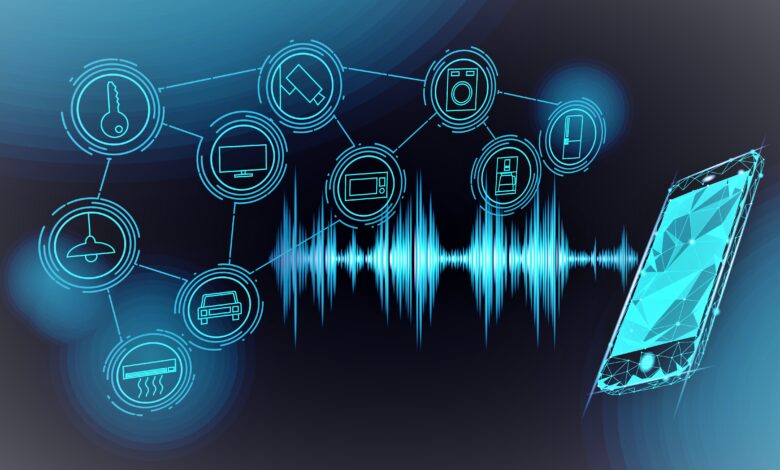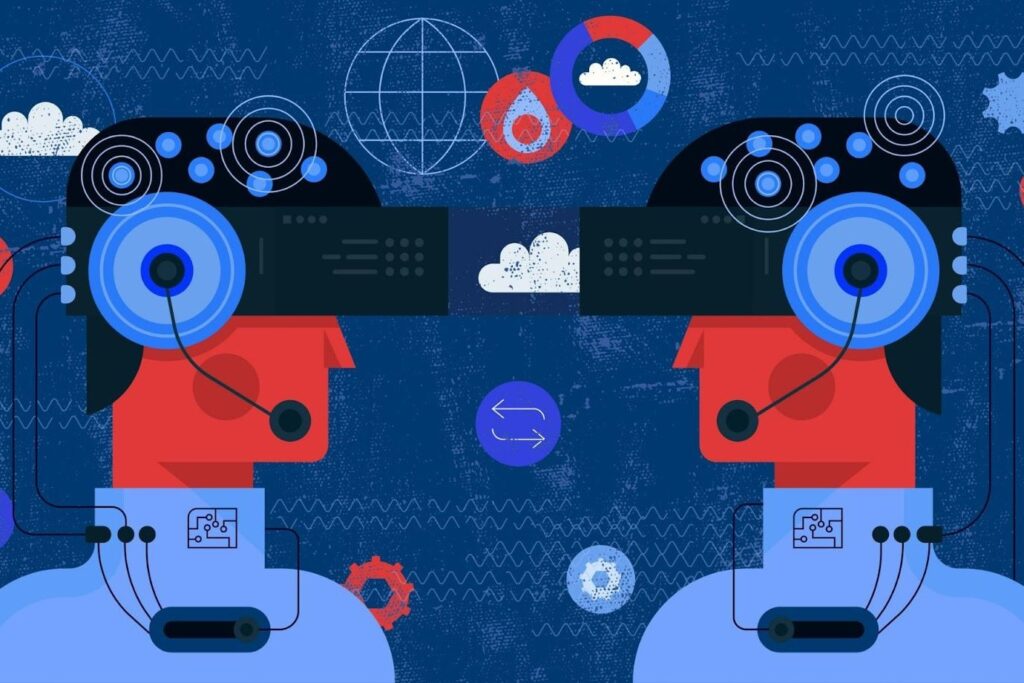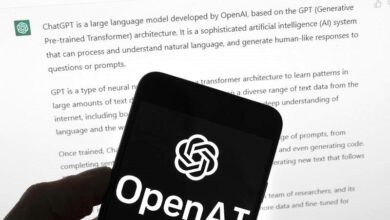Best Speech Recognition Software 2023 -Kat Technical
Speech Recognition: Everything You Need to Know in 2023

Speech Recognition, Neural networks, operators, and recognition have all helped speech recognition technology advance. It enables precise multilingual transcription, scheduling, and ancillary devices and applications in sectors like virtual assistants, healthcare, and automobiles. A device-in-device configuration issue is analogous to encryption. Future conversations will center on intelligence and situation.

In the realm of artificial intelligence, speech recognition has witnessed remarkable advancements in recent years, revolutionizing the way humans interact with machines. The intersection of machine learning, neural networks, and natural language processing have paved the way for sophisticated speech recognition systems that are now capable of understanding and transcribing spoken language with unprecedented accuracy and efficiency. This article delves into the latest artificial intelligence technologies in speech recognition, highlighting their key features, applications, and implications for various industries.
Neural Networks and Deep Learning:
Neural networks, particularly deep learning architectures like convolutional neural networks (CNNs) and recurrent neural networks (RNNs), have been instrumental in enhancing speech recognition capabilities. These models can analyze complex audio data and extract intricate patterns, allowing for improved transcription accuracy. Deep learning techniques have led to the development of end-to-end speech recognition systems, eliminating the need for intermediate feature extraction steps.
Transformer Architecture:
The transformer architecture, popularized by models like BERT and GPT-3, has also found its way into speech recognition. Transformers excel at capturing long-range dependencies in sequential data, making them well-suited for speech recognition tasks. Through self-attention mechanisms, transformers can effectively process and interpret the context of spoken language, resulting in more contextually accurate transcriptions.
Contextual and Emotion Recognition:
One of the recent breakthroughs in speech recognition technology is the incorporation of contextual and emotion recognition. Advanced AI models can now discern the emotional tone and contextual cues in spoken language, enabling systems to adapt their responses and actions accordingly. This technology holds immense potential in customer service applications, where understanding customer emotions can enhance user experience.
Transfer Learning and Multilingual Support:
Transfer learning techniques allow models trained in one language to be adapted for use in other languages with relatively minimal training data. This has led to the development of multilingual speech recognition systems, catering to a global audience. Such systems can transcribe and understand multiple languages, enabling cross-lingual communication and accessibility.
Real-time and Edge Processing:
The integration of speech recognition into edge devices and real-time applications is another exciting development. AI algorithms have been optimized to run efficiently on devices with limited computational resources, such as smartphones, smart appliances, and IoT devices. This enables seamless voice commands and interactions without the need for a constant internet connection.
Privacy and Security Considerations:
As speech recognition becomes more ubiquitous, concerns regarding user privacy and data security have gained prominence. Innovations are emerging in the form of on-device speech processing, ensuring that sensitive audio data remains within the user’s control and is not transmitted over the network. Techniques like federated learning contribute to the training of models without compromising data privacy.
Applications:
Virtual Assistants and Smart Devices:
Speech recognition technology is at the core of virtual assistants like Siri, Alexa, and Google Assistant. These AI-powered companions can comprehend user voice commands, answer questions, perform tasks, and control smart devices, making daily life more convenient and efficient.
Healthcare and Medical Transcription:
In the medical field, speech recognition systems aid in accurate and timely transcription of medical records, dictations, and patient interactions. This improves documentation efficiency for healthcare professionals and enhances patient care.
Accessibility and Inclusion:
Speech recognition has significantly improved accessibility for individuals with disabilities. Voice-controlled interfaces allow people with limited mobility to interact with computers, smartphones, and other devices more effectively.
Automotive Industry:
Automotive manufacturers are integrating speech recognition into vehicles, enabling drivers to control navigation, entertainment systems, and communication hands-free. This enhances driver safety and minimizes distractions.
Call Centers and Customer Service:
AI-powered speech recognition technology is transforming call centers by automating customer interactions and routing calls more efficiently. This reduces wait times and enhances overall customer satisfaction.
Conclusion:
The latest artificial intelligence technologies in speech recognition are rapidly reshaping the way humans interact with machines and opening up new possibilities across various industries. From virtual assistants that understand context and emotion to multilingual support and real-time edge processing, these advancements are bringing us closer to seamless and natural communication with technology. As these technologies continue to evolve, it is crucial to address privacy and security concerns while maximizing the benefits of AI-powered speech recognition for a more connected and accessible world.
Frequently Asked Questions
What is speech recognition technology?
Speech recognition technology is an artificial intelligence (AI) technology that enables machines to understand and transcribe spoken language into text. It involves the use of advanced algorithms and models to convert audio signals into written words, allowing for seamless human-machine communication.
How has AI advanced speech recognition?
AI has significantly advanced speech recognition through the integration of neural networks, deep learning, and transformer architectures. These technologies enable machines to analyze complex audio data, understand context, and recognize patterns, resulting in higher accuracy and more natural interactions.
What is the role of neural networks in speech recognition?
Neural networks, especially deep learning models like convolutional neural networks (CNNs) and recurrent neural networks (RNNs), play a crucial role in speech recognition. They can process and extract intricate features from audio data, improving transcription accuracy and enabling end-to-end speech recognition systems.
What is the transformer architecture’s impact on speech recognition?
The transformer architecture, known for its success in natural language processing tasks, has been applied to speech recognition. Transformers excel at capturing long-range dependencies in audio sequences, allowing them to understand context and nuances in spoken language, resulting in more contextually accurate transcriptions.
How does emotion recognition affect speech recognition technology?
Emotion recognition involves detecting emotional cues in spoken language. Integrating emotion recognition into speech recognition systems enables machines to understand the emotional tone of the speaker, leading to more personalized and empathetic interactions, particularly in applications like customer service and healthcare.
What is multilingual speech recognition?
Multilingual speech recognition involves training AI models to transcribe and understand multiple languages. Transfer learning techniques enable models trained on one language to be adapted for others with minimal data, facilitating cross-lingual communication and accessibility.
How is speech recognition being used in real-time and edge processing?
Speech recognition is being optimized for real-time and edge processing, enabling devices with limited computational resources to perform speech recognition tasks efficiently. This allows for voice-controlled interactions on smartphones, IoT devices, and other edge devices without a constant internet connection.
What are the applications of speech recognition technology?
Speech recognition technology has diverse applications, including virtual assistants, healthcare and medical transcription, accessibility for individuals with disabilities, automotive systems, and call centers for customer service automation.
How does speech recognition impact privacy and security?
Privacy and security concerns arise as speech recognition becomes more prevalent. Innovations such as on-device processing and federated learning address these concerns by keeping sensitive audio data on users’ devices and minimizing data transmission.
What does the future hold for speech recognition technology?
The future of speech recognition holds promise for even more accurate, context-aware, and emotionally intelligent interactions between humans and machines. Continued research and innovation will likely lead to enhanced user experiences, improved accessibility, and increased integration across various industries



